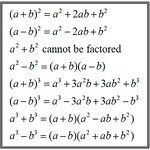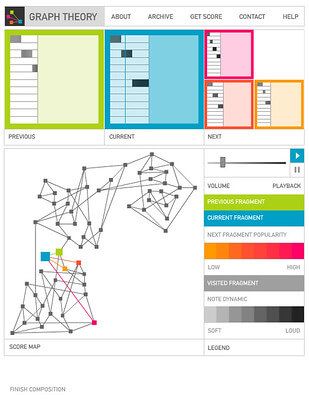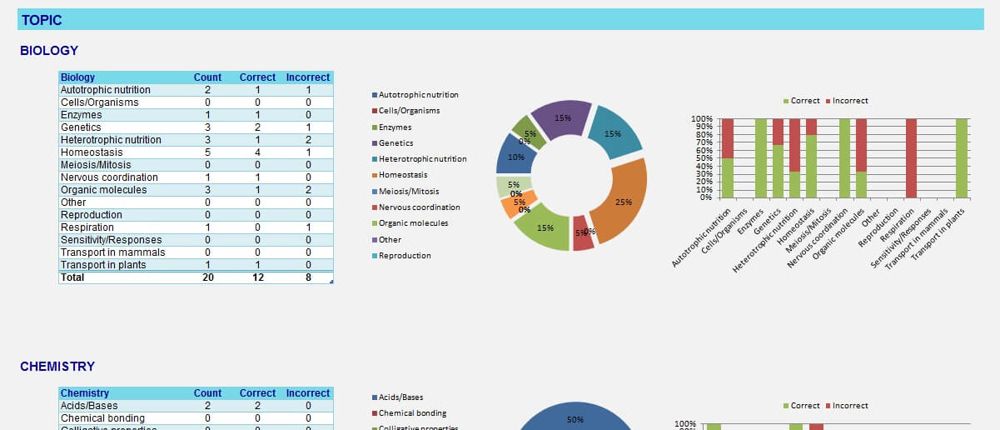GAMSAT Section 3 Preparation
Section III, colloquially known as the Science portion or formally termed ‘Reasoning in Biological and Physical Sciences’ by ACER, to many medicine school hopefuls is the most enigmatic section of the GAMSAT paper. Gamsat section 3 preparation is often considered confusing due to the long-winded question stems, the heavy use of scientific jargon or the obscure illustrations that are commonplace to this section. The difficulty of the questions coupled with the pressure of time, places Gamsat Section 3 as a dreaded undertaking.
Additionally, although prefaced as a Science-based section, candidates even with the most decorated science backgrounds or who have gleaned from a plethora of science resources fail to perform exceptionally. Unlike the other sections, this is the section that many students struggle to improve upon across each sitting. Those individuals who manage to surmount the challenge of this section credit their success to a holistic knowledge of the format, approach and other aspects which will be thoroughly broken down in this article.
The format
The Gamsat format as per ACER’s most recent publication, Section III tests upon three major branches of Science: Chemistry, Biology and Physics.
40% of the questions are based on Chemistry, 40% are Biology based and the remaining questions are Physics related.
When an overall GAMSAT score is calculated, this section is weighted twice as much as each of the other sections – making the GAMSAT essentially 50% science and 50% non-science. A caveat to this is that the weighting of each section, including Section III is subject to change and some Gamsat universities do not double weight the science section, so double check with the medical schools you are applying to.
Baseline approaches
Prior knowledge is said to not be an inherent requirement noted by ACER for any of the sections of the GAMSAT. Despite this, it is important to maintain or develop a strong science acumen.
Firstly, the most important aspect is to assess your current strengthens and weaknesses as a candidate. This can be gauged by considering your prior studies,familiarity with science topics and undertaking a diagnostic test. This information cumulatively would allow for the development of a tailored study plan and particular focuses.
Another key skill is competency in reading and interpretation of scientific literature. This can be developed by reviewing current scientific articles that are widely and freely available through many scientific databases. This is transferable to the GAMSAT because many of the questions posed in Section 3 are rooted in scientific jargon or foregrounded with information that detracts from the task of the question. Having experience reading scientific articles would allow for more proficient filtering of relevant information, better understanding of scientific jargon, exposure to the scientific method and the flow of scientific ideas. Moreover, reading from a diverse list of articles would provide exposure to many different illustrations, graphical modalities,charts, and other mathematical formats that are common to this section.
The following resources are databases in which can be used as a starting point to locate Scientific research papers:
A rudimentary understanding of major Chemistry, Physics and Biology topics is also essential to Section 3 success. ACER has stated in its most recent publication that a ‘first year of university studies in biology and chemistry, and A-level/Leaving Certificate/Year 12 in physics’ can be a benchmark for the content expected in this section. Although, not explicitly outlined by ACER, having a basic mathematical understand will also be vital in tackling conversion, rearranging and other simple mathematical application questions.
Having this prerequisite knowledge will allow candidates to have some familiarity during their sitting which will provide confidence and decrease the time they spend dissecting the question stem. More broadly, this knowledge will allow individuals to hone their scientific approach, will improve their response to questions, analysis, conclusions to stimulus and a better understanding of scientific mechanics.
Types of questions
From several years of GAMSAT Section III testing, much of the knowledge tested upon cannot be accurately predicted. The trendings of the styles of questions that appear can be better gauged and be leveraged for Section III success.
In Gamsat Section 3 questions are organised into Units. These units provide all of the necessary information and stimuli required to answer the underpinning questions. There are usually around 3 or more questions that are relevant to each unit, with each question having 4 possible options from A to D to select from.
Historically, the types of questions expected are:
Application of formulas
These types of questions typically begin with a verbose paragraph of information that introduces the formula, defines the variables involves and foregrounds the scientific relevance of this formula. Usually, parts of these formulas seem familiar, teasing on foundational scientific topics but the formula overall applies to very niche scientific scenarios. These formulas are generally not too difficult to interpret and the relationship between variables are also often basic.
In terms of applying these formulas, this can involve rearrangement of the formula and solving for a particular variable. This can also include interpreting a change of a variable given the change of another variable.
A rudimentary understanding of mathematics in particular Algebra is important in manipulating these variables and tracking relationships between variables. Additionally, a grasp of units is also essential as some conversions may need to be applied before values can be substituted into the relevant formulas.
Specifically applying to these styles of questions, the formulas themselves, the magnitude of the expected answers and the unitscan all aid in deducing the correct answer.
Given that formulas are more commonly present in the study of Physics and Chemistry, this is the focus of these styled-questions with the odd biology-based question appearing.Furthermore, within these science branches, there are only a few topics that can be described with a formula, narrowing the topics that can be asked.

Diagram-based
This stands to be the most dreaded form of question asked. This style of question is presented through some illustration that serves to represent a scientific process, illustrate a schematic or describe scientific phenomena.
The type of visuals that appear in these questions are often unique as they represent unique scenarios within science. These questions, seemingly intuitive because of the medium used to described them, prove to be the most difficult because of the volume of information condensed into single visuals. Given the organisation of these illustrations, it’s important to separate which parts are superfluous and which fall into the scope of the question.
Accompanying these illustrations is contextual information which function to expand on the graph and provide more insight into what the graph is trying to explore. For these styles of questions, it is also important to realise that the answer lies within the diagram details. Hence, bringing in external information may provide some confidence in approaching the question but may add a dimension of complexity that is not called for in the original question.
Graph-based
This question style generally splits the GAMSAT crowd as some candidates find these questions to be reasonable while others loathe the appearance of these questions.
As the label suggests, these questions generally focus on the graph provided, specifically the interpretation, analysis and explanation of a graph.
These graphs can appear in various forms, with the graphical mediums most commonly used in this section being dot plots, logarithmic graphs, linear graphs, multiple bar charts. Despite prior familiarity with these types of graphs, there is a different analytical skill that is required tounderstand these graphs as the relationships between variables are not as straight forward as in standard graphs.
Consistent with whichever graphical modality is presented, the axis labels, axis scale, title and included units can all be units to hint at the correct response.
Along with the graphs themselves are figures, legends and additional stimuli which with the foregrounding information serve to construct a clearer picture of the mechanics of the graphs and the scope of the investigation conducted.
In top tier questions, there are often more than one graph presented and more than one variable plotted.These questions especially require a trained eye, in order to filter which parts of the graph are relevant and which detract from the answering of certain questions.

Mixture
Many of the higher-order questions that separate candidates from upper percentile performance make use of a combination of styles. These questions should be highlighted during practice, as they allow you to hone your approach of each of the aforementioned styles in one question.
Moreover, these questions seldomly appear and often make up the small proportion of questions that a high number of students score incorrectly in and have very sophisticated solutions – that require more than the allotted time per question to arrive to.
Learning style
Given that all three science disciplines are tested, there is a broad range of knowledge that can be called upon. Hence, this creates a large learning curve and a big difficulty in deciphering the relevant from irrelevant information.
Within this, it is vital to your Gamsat preparation to create the most conducive and sustainable learning environment to absorbing and later applying Scientific knowledge. This fundamentally comes down to understanding your profile as a learner by considering factors such as: type of learner (visual, kinesthetic, auditory), different learning mediums (flashcards, illustrations) and attention span. This information can then be leveraged to maximise your learning and create a learning plan that aligns with your learning habits.
Within this, it is also valuable to be cognisant of the level of detail required and avoid learning superfluous details – which would consume time that could otherwise be spent mastering required knowledge. Lastly, it is good to acknowledge the links and interconnected nature of Science disciplines that would fast-track learning and improve retention.
Be selective with resources
As more and more candidates sit the GAMSAT, the availability of resources and programs has grown accordingly. It is important to be tactful with the resources selected, choosing those that best mirror ACER’s style, format, and difficulty. It is essential to be consistent with the resources used to establish and practice an appropriate consistent strategy in tackling questions.
The least acknowledged mistake made by students is choosing resources that do not align with ACER’s style, constantly cycling between resources or using outdated resources. This can result in a false confidence during study as different content and strategies are being refined – not being conducive to section III success.
Timing
Learning content is an essential skill but ensuring you can cycle between the vast range of required scientific knowledge, interpretate the stimulus and effective make deductions under timed conditions is an additional skill that needs to be honed. As with any other skill, timing is refined through consistent practice and incrementally, starting with attempts with no time, attempting individual questions with time and tackling entire Sections under a time constraint.
While carrying out timed attempts, testing should also be done in authentic test conditions that mirrors an actual GAMSAT sitting. This includes sitting at a desk with the permitted written items and identification at the usual scheduled time - these considerations will cue the mind towards test conditions and better reinforce focus.
More minorly, these timed attempts will allow candidates to gauge how their satiety, focus and fatigue waivers throughout the sitting, factors which can be accounted for in subsequent attempts. In order to draw a more quantitative picture of progress with timed tests, a spreadsheet can be developed in Microsoft excel. This would allow for better organisation, convenient formatting and would provide an indication of which science branch should be the focus of timed sittings.
Given the circumstances of the global COVID-19 pandemic, ACER have opted to shift the administration of the GAMSAT to an online delivery platform. As such, candidates should familiarise themselves with the virtual learning environment and even account for trivialities such as the use of a facial mask.
Marking
Although dreaded by many candidates, scoring completed Gamsat past papers is an essential indicator to tracking progress and identifying the future focuses for study. Marking itself is more than penning a cross or a tick but requires a trained scrupulousness and a defined method. Effective marking involves revisiting the question, reviewing the initial thinking behind the chosen answer, and interpreting the explanation given for the correct answer. Beyond this, it is also important to evaluate the relevant content, while also being mindful of the extent and detail covered. Finally, the last important consideration is to acknowledge the other options posed and be able to substantiate why they are incorrect. These processes applied in-tandem will provide a thorough review of the question, grasping of content and will further bolstering the deduction process.
Moreover, these marks provide the ideal baseline to quantitively track improvement from the start of preparation up until the sitting. Despite this, marking should not be directly correlated with final performance as each Section III portion is varied across papers – testing upon different theory presented in unique modalities and styles. Rather, these results serve better as a blunt personal indicator to calibrate current study techniques, focuses and study timeline.
As with marking, a method that can be used to track performance is through developing an Excel spreadsheet. Excel can be used to accurately organisemarks based on details such as: the date of completion, questions involved,the test paper publisher. Furthermore, the tool packages within Excel can be used to computate further statistics and construct visuals in order to better gauge focus for future areas of study.
Excel spreadsheets such as this are included in the Griffiths GAMSAT Review Home Study system if you do not have the computer skills to make your own.

Lastly, as well as identifying patterning, thoroughly assessing questions also provides exposure to odd questions that a high percentage of students score poorly on. These questions appear periodically and have low achievement not because of their inherent difficult but because of their complex solutions. The thinking behind these questions usually supersedes the time window needed to spend per question, hence, requires a deduction-based approach rather than straight application of theory.
Further Key Considerations
Another important approach is to play to your strengths. Each candidate will have a distinct academic profile, fluency with each Science discipline and experience with a select number of questions. Given that the GAMSAT is a time-sensitive assessment, it is important that candidates gauge their confidence with each branch and focus on these sections to secure these marks before progressing to less versed questions.
Another overlooked but key consideration is maintaining organisation. Developing a routine and recording the days dedicated to GAMSAT study should be considered. This can be simply be developed through an online software or be drafted manually. This would also allow you to split your time between other sections of the GAMSAT, revising content and focusing on Section III paper sittings.
The old simple cliché, Practice makes Perfect, also applies to tackling this mammoth of a section. The more practice tests you attempt, the more trends become apparent, the more experienced is garner with different medium and the faster conclusions can be synthesised from information. Conversely, another cliché Quality over Quantity, can be cited in order to tackle the rigor of Section three. Many candidates fall in the trap of undertaking multiple GAMSAT programs, consulting various textbooks and GAMSAT books. To an extent, it is important to have a broad range of resources to seek practice from, but the usefulness of these resources is only validated if they are completed properly with quality.
Other than volume of questions attempted, the quality and diversity of questions tried is also an important consideration. Candidates often stick to a select discipline or type of question style, steering away from the more sophisticated or involved questions. It is extremely valuable to understand when a topic has been mastered and is being continued solely to garner confidence. Moreover, despite questions not commonly being recycled across papers, the underlying understanding, calculation, approach, or theory can be transferred to new questions – maximising your Section III outcome.
Mastering the process of elimination, although an elementary skill, can maximise the marks you obtain. This skill comes about with practice and requires a meticulous eye to filter out details such as units, wording and illustration cues which can hint candidates towards deducing the correct response. Additionally, this skill can help compensate for lack of familiarity with a particular concept as it hinges more on the logic and suitability of an answer rather than the process behind arriving at it.
Mindset Strategies
A significantly overlooked consideration is the mental factor surrounding the GAMSAT. Every undertaking that is tied into future prospects, course entry and careers like the GAMSAT automatically imbues candidates with feelings of fear and deep panic. The success in the GAMSAT and in particular, Section III can be attributed to surmounting this mental hurdle and a sustained confidence in personal intelligence and learning program.
It is also important to not let the GAMSAT define your merit as a candidate, and instead be wary that many students, even those with the most esteemed credentials often sit the GAMSAT more than once before Medical school admission. In the same vein, these same candidates that do succeed in the GAMSAT should not be a direct point of comparison as each individual has their own distinct pathway.
Coinciding with maintaining a healthy mentality, is the idea of balance.Developing a routine by scheduling GAMSAT study around mindful activities, allowing breaks and integrating study into everyday life is essential. Although, not directly connected to academic success, this provides the opportunity to reflect, recover from study fatigue and provides overall reprieve.
Mindset on the day of the sitting, anecdotally, is one of the most powerful aspects of overall GAMSAT success. Having confidence in all the foundation work, skills, approaches and knowledge developed prior is essential to maintain a positive mindset. Many individuals are often overcome by seeing their peers during their sitting and being overwhelmed by the career implications of the GAMSAT. To restore confidence, it is important to pause, revert to positive mental strategies and salvage your sitting.
Conclusion
Section III, like the rest of the GAMSAT, is perceived as a near impossible assessment with cryptic content and an even more elusive method to improve.
If Section III is considered at the most basic level with perceptions removed, it presents itself as any ordinary test. As with tests, knowledge can be gleaned, strategies can be honed, and efforts can be made in order to ensure you secure the best outcome.
Ultimately, the onus is on the individual to seek out the best method for them. Beginning by applying all of the aforementioned considerations and techniques would definitely set candidates in the right trajectory to catapulting their Section III scores.
Sitting the GAMSAT in itself is a significant achievement and is a testament of sustained passion and resilience. This is one of the first steps to taking the reins of your career goals and should not be negated whatever the outcome!
